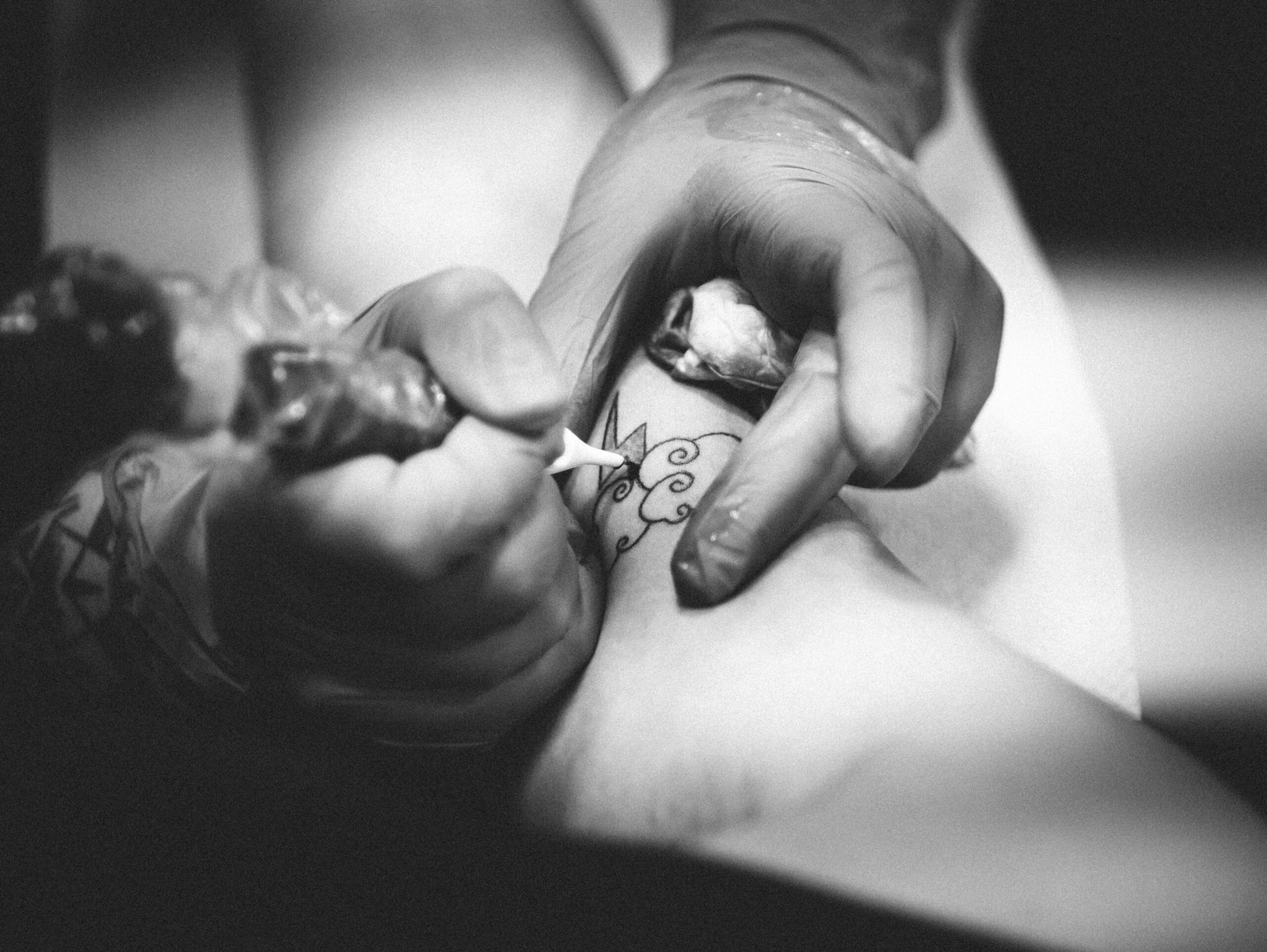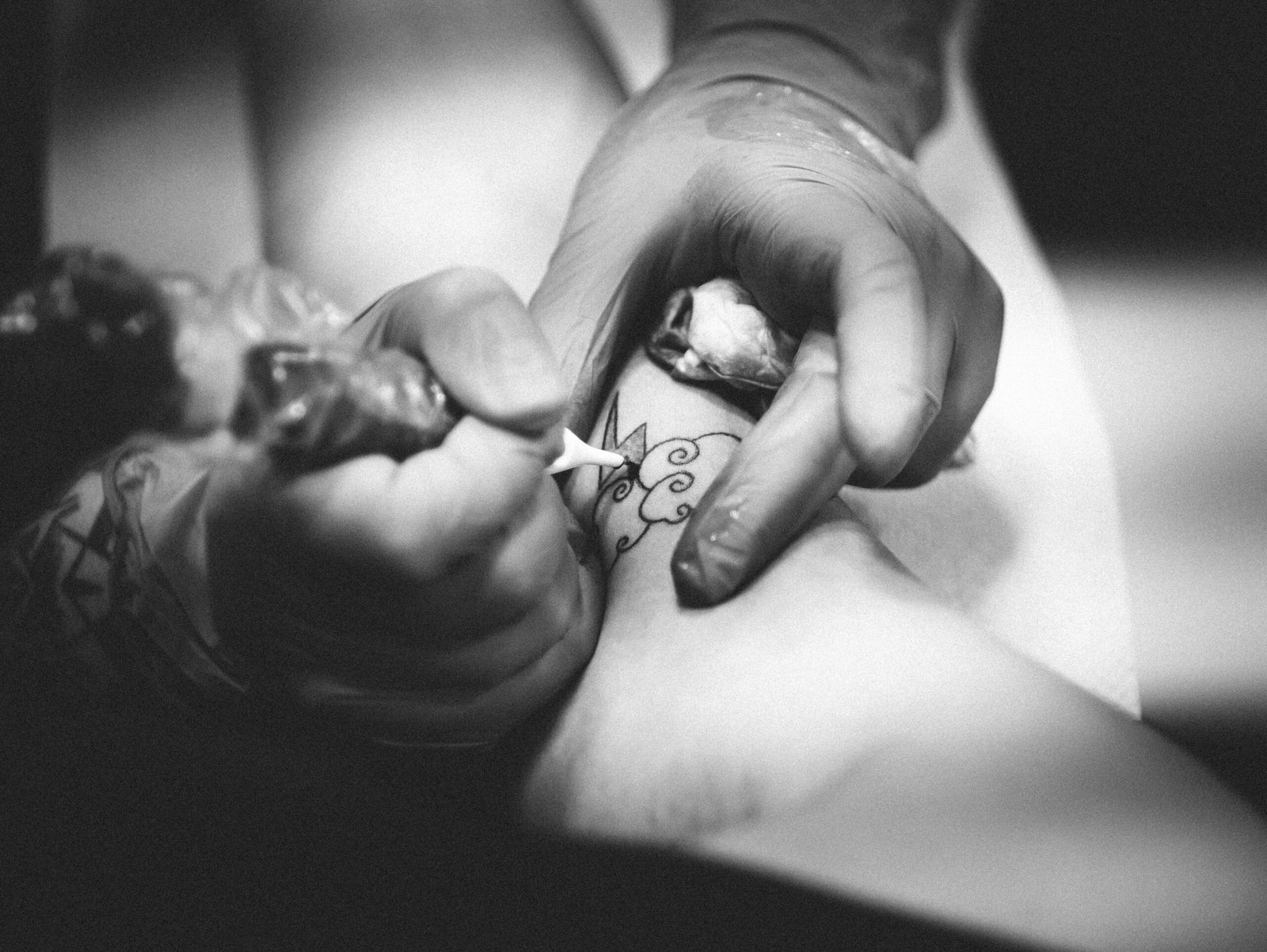Do You Pee Out Ink After Tattoo Removal? Understanding the Process and Myths
The Science Behind Tattoo Ink and Removal
Tattoo ink is a complex mixture of pigments, carriers, and additives. Pigments can be either organic or inorganic and are responsible for the varied colors seen in tattoos. Carriers, which often include water, alcohol, and glycerin, ensure that the pigments are delivered smoothly into the skin. When tattooing, a needle punctures the skin’s epidermis and deposits ink into the dermis, a deeper layer where the ink becomes more stable. This process triggers an immune response as the body recognizes the ink particles as foreign substances.
Over time, the immune system sends macrophages—specialized cells that engulf and digest foreign particles—to the tattooed area. These cells attempt to remove the ink particles but often fail due to the sheer size of the pigments. Consequently, the pigments remain in the dermis, giving tattoos their long-lasting properties.
Laser tattoo removal is the most common and effective method for eradicating unwanted tattoos. The technique employs specific wavelengths of light to break down the pigments into smaller particles. The body’s immune system can then gradually eliminate these smaller fragments. During this process, macrophages play an integral role, engulfing and transporting the fragmented ink to the liver, where it can be processed and excreted.
Contrary to some popular myths, after laser tattoo removal, the body does not ‘pee out’ the ink in a noticeable form. The molecular breakdown of the pigment particles results in their absorption and excretion at a cellular level, making it imperceptible. Smaller fragments are efficiently removed through the natural metabolic pathways, primarily through the liver and kidneys, but this happens on such a micro-scale that it is not detectable in everyday bodily functions.
Thus, understanding the intricate science behind tattoo ink’s deposition and removal highlights how advanced technology aids in achieving effective tattoo removal. This comprehensive approach clarifies some of the misconceptions surrounding the process, especially concerning how and where the ink goes post-removal.
Common Myths About Tattoo Removal
One prevalent myth about tattoo removal centers around the idea that a person might actually “pee out ink” after the procedure. This misconception likely stems from misunderstandings about how the body processes and expels foreign substances. The truth is, when a tattoo is removed using laser technology, the laser breaks down the ink into tiny particles. These fragmented ink particles are then metabolized and expelled by the body’s lymphatic system, not through the urinary tract.
Another common myth is that laser tattoo removal is excruciatingly painful and can cause severe burning. While there is some discomfort associated with the procedure, it is often compared to the sensation of a rubber band snapping against the skin. Improvements in laser technology have significantly minimized the pain and risk of skin damage. Indeed, most patients report manageable pain levels and minimal side effects, typically limited to temporary redness and swelling.
Additionally, many people believe that tattoo removal is a quick, one-time treatment. In reality, the number of sessions required depends on several factors, including the size, color, and age of the tattoo, as well as the patient’s skin type and overall health. On average, a person might need between six to twelve sessions spaced several weeks apart to achieve optimal results. Patience and proper aftercare are essential for successful removal.
Lastly, there is a misconception that once a tattoo is removed, the skin returns to its exact pre-tattoo condition. While modern laser techniques can significantly lighten and even completely remove tattoo ink, some individuals may still notice slight variations in skin texture or color. Factors such as the depth of the original ink and individual skin healing responses play crucial roles in the final outcome.
In summary, dispelling these myths is important for providing a clear and accurate understanding of the tattoo removal process. Recognizing that the body expels ink through the lymphatic system, understanding the true nature of the pain involved, acknowledging the necessity for multiple sessions, and maintaining realistic expectations are key to appreciating the advancements in tattoo removal technology.
The Role of the Lymphatic System in Ink Removal
Tattoo removal is a complex process where the body plays a significant role beyond what is affected directly by the laser treatment. The lymphatic system is at the forefront of this natural process. This network, consisting of lymph nodes, vessels, and lymph fluid, works to cleanse the body of toxins and foreign substances, including fragmented tattoo ink particles.
When you undergo laser tattoo removal, the laser breaks down the ink particles into smaller fragments that are more manageable for the body to eliminate. These tiny particles are then absorbed by the lymphatic system, which effectively acts as a filtration system. The lymphatic system routes the ink particles to lymph nodes, where they are gradually broken down further and processed.
It is a common misconception that the ink particles from a removed tattoo are expelled through urination. However, the reality is that the body uses various mechanisms and systems for the expulsion of foreign particles. The lymphatic system plays a crucial role by capturing and relocating these ink fragments to the spleen and liver for filtering, after which they are removed from the body through metabolic processes and excreted via feces.
This information emphasizes the critical function of the lymphatic system in the tattoo removal process. Understanding this can help dispel myths and provide clarity on how the body assimilates and expels the ink. The efficient work of the lymphatic system means that, while you won’t pee out the ink, the intricate processes within your body will ensure the ink is safely and effectively removed, maintaining the body’s balance and health.
Post-Tattoo Removal Care and What to Expect
Following a tattoo removal session, it is crucial to adhere to specific aftercare guidelines to promote healing and achieve the best possible outcomes. Taking care of the treated area can significantly influence the effectiveness of the removal process and lower the chances of undesirable side effects.
Immediately after the session, patients may observe redness, swelling, and a sensation similar to sunburn in the treated area. These reactions are typical and should subside within a few days. Occasionally, there may be blistering or scabbing, but these should not be punctured as they naturally heal over time. Keeping the area clean and dry is imperative to avoid infection. Gentle washing with mild soap and water, followed by patting the area dry with a clean towel, is typically recommended.
Applying an antibiotic ointment and covering the treated area with a sterile bandage can further protect the skin. Additionally, patients should avoid excessive sun exposure to the treated area, as UV rays can severely affect the healing process. The application of a broad-spectrum sunscreen with a high SPF is advised when exposure to sunlight is unavoidable.
Over-the-counter pain relievers, such as ibuprofen, can help alleviate discomfort and reduce inflammation. Avoiding strenuous physical activities that cause excessive sweating can also help in preventing irritation of the treated area. Wearing loose-fitting clothing can reduce friction and irritation as the skin undergoes the healing process.
The healing timeline can vary depending on the individual’s skin type, the tattoo’s location, and the specifics of the tattoo removal procedure. Initial healing typically occurs within one to two weeks, but complete skin recovery and readiness for subsequent sessions may take several weeks.
By maintaining these aftercare practices, individuals can ensure more effective and safer tattoo removal. Understanding what to expect and how to manage side effects can provide peace of mind and contribute to a smoother recovery process.







